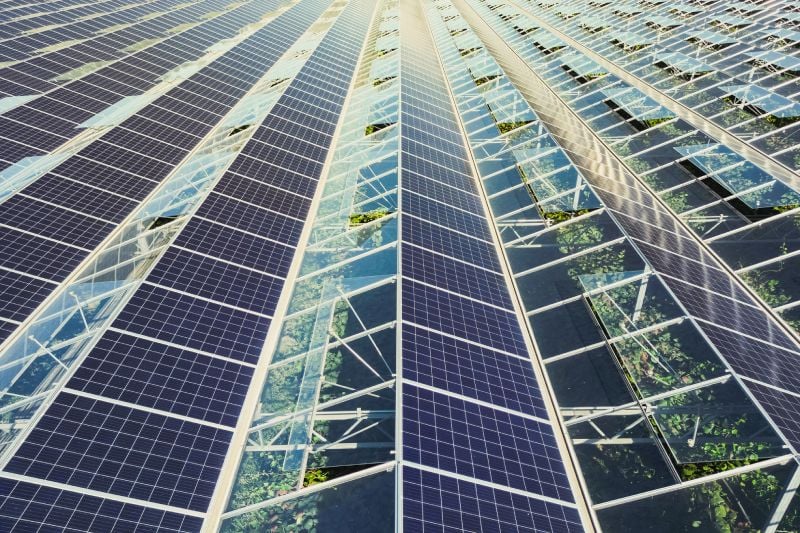Energy Efficiency in Greenhouse Operations: Strategies and Solutions
)
Energy efficiency in greenhouse operations has become a significant priority in the pursuit of sustainable agriculture. Optimizing energy use in greenhouses is crucial for both financial viability and environmental sustainability in light of rising energy costs and expanding environmental concerns. This blog explores different approaches and technology that might greatly improve the energy efficiency of greenhouse operations used for commercial purposes.
The Significance of Energy Conservation
In order to maintain ideal growing conditions, greenhouses are energy-intensive enterprises that mostly rely on artificial lighting, heating, cooling, and ventilation. Greenhouses that use energy efficiently lessen the carbon footprint of agricultural output while also saving operating costs. Greenhouse operators may boost their business line and aid in the worldwide fight against climate change by using energy-efficient techniques.
Techniques to Increase Energy Economy
Sources of Renewable Energy
Making the switch to renewable energy sources is one of the most effective strategies to improve energy efficiency in greenhouse operations. Reliance on fossil fuels can be decreased by using sustainable energy sources including biomass energy systems, wind turbines, and solar panels.
Solar Energy: A large amount of the energy needed for operations can be produced by installing solar panels on greenhouse roofs. Solar energy works best in areas with lots of sunshine, and because to technological developments, many greenhouse owners can now afford to employ it.
Wind Energy: Particularly in windy areas, wind turbines can produce electricity for greenhouse operations. While bigger installations can power entire greenhouse complexes, smaller wind turbines are appropriate for individual greenhouses.
Biomass Energy: Using techniques like anaerobic digestion or combustion, biomass systems turn organic waste into energy. For heating and electricity, biomass systems can offer a dependable and sustainable energy source by utilizing agricultural waste or other organic resources.
Lights That Use Less Energy
One of the biggest energy users in greenhouses is lighting, especially in areas with little natural light. Energy savings can be achieved by installing lighting systems that use less energy.
LED Lighting: The illumination of greenhouses has been transformed by Light Emitting Diode (LED) technology. Compared to conventional incandescent or fluorescent lights, LEDs use less energy and have a longer lifespan. Furthermore, LED lights can be programmed to generate particular light wavelengths that are best for growing plants.
Light Diffusers and Reflectors: By maximizing the effectiveness of the light that is available, light reflectors and diffusers can guarantee that plants receive consistent lighting. As a result, less artificial lighting is used, improving energy efficiency overall.
Effective Cooling and Heating
It is essential to maintain the proper temperature for the health and productivity of plants. In order to ensure ideal growing conditions while minimizing energy use, efficient heating and cooling systems are crucial.
Thermal Screens: Putting up thermal screens will assist the greenhouse retain heat in the winter and reflect extra heat in the summer. Energy can be saved by using these screens to lower the need for heating and cooling.
Heat pumps: Compared to conventional heating systems, heat pumps are a more energy-efficient option. Compared to traditional heating techniques, they use a great deal less energy to transmit heat from the outside environment into the greenhouse.
Geothermal Systems: Geothermal heating and cooling systems control greenhouse temperatures by drawing on the steady temperatures that exist beneath the surface of the earth. Although geothermal systems might be expensive to construct initially, they provide long-term energy savings and environmental advantages.
Climate Control That Is Automated
Real-time monitoring and adjustment of greenhouse conditions is possible with automated climate control systems thanks to sensors and computer algorithms. By making sure that ventilation, heating, cooling, and lighting are only used when necessary, these systems maximize the usage of energy.
IoT devices and sensors: Sensors can track CO2 concentrations, temperature, humidity, and light levels and send the information to central control systems. This data can be integrated via Internet of Things (IoT) devices, enabling exact greenhouse environment modifications.
Automated Ventilation and Shading: By obstructing too much sunlight during hot weather, automated shading systems might lessen the need for air conditioning. In a similar vein, airflow can be controlled by automated ventilation systems to preserve ideal humidity and temperature levels.
Energy-Sufficient Architecture
The energy efficiency of greenhouses is greatly influenced by their design and construction. Well-considered design can raise overall efficiency and lower energy requirements.
Insulation: Sufficient insulation helps keep the greenhouse's temperature constant, which lowers the demand for heating and cooling. Insulated walls and double-glazed windows are practical ways to improve energy efficiency.
Orientation and Layout: A greenhouse's orientation and layout can affect how energy-efficient it is. It may be possible to minimize wind exposure and increase natural light in the greenhouse, which will cut down on the amount of heating and lighting needed.
In addition to being a cost-saving measure, increasing greenhouse energy efficiency is a crucial step toward sustainable agriculture. Greenhouse operators can greatly minimize their energy consumption and environmental impact by implementing energy-efficient building designs, automated climate control, energy-saving heating and cooling systems, and renewable energy sources.
New approaches to greenhouse energy efficiency will surface as technology develops, augmenting agricultural output and sustainability even further. By adopting these tactics now, greenhouse farming can guarantee a more environmentally friendly and productive future.
Contact the experts at Cultivate and Equipment to talk about your greenhouse needs.
| Tags:GreenhouseLatest News |

